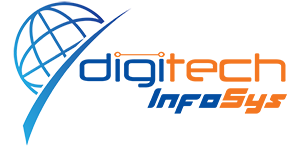Transforming Website Traffic into Income with Professional SEO Services
In the continuously shifting world of digital commerce, effectively attracting visitors to your website is half the fight. Getting that traffic to translate into real revenue is the ultimate objective. To do this, a calculated strategy combining strong search engine optimization (SEO) tactics with in-depth knowledge of consumer behavior and industry trends is needed. In this process, Professional SEO Services are essential for firms to optimize their potential revenue. We’ll look at how companies may use expert SEO services to convert website visitors into steady revenue streams in this in-depth guide.

Understanding the Role of SEO in Revenue Generation
The foundation of online exposure is SEO. It includes optimizing your website for relevant keywords and phrases in order to rank better in search engine results pages (SERPs). SEO increases the exposure of your website and attracts organic traffic, which is made up of people who are actively looking for goods, services, or information in your sector.
But increasing traffic by itself won’t bring in money. You must successfully turn those visitors into clients or customers in order to make money from your website. This is where expert Professional SEO Services come into play because they concentrate on improving the user experience overall in order to promote conversions, in addition to increasing traffic.
Important Methods for Increasing Website Traffic
- Keyword Optimization: Professional SEO services conduct in-depth keyword research to identify terms and phrases that are highly relevant to your target audience. By strategically incorporating these keywords into your website’s content, meta tags, and headings, they can improve your rankings for specific search queries, attracting qualified traffic that is more likely to convert.
- Content marketing: Well-written, educational content builds your reputation and authority in your field while also drawing visitors. In order to increase engagement and build trust, you can create a content strategy that appeals to the needs and interests of your target audience with the aid of professional SEO services. A variety of content types, including as blog posts, articles, videos, and infographics, can increase conversion rates and satisfy a range of tastes.
- On-Page Optimization: On-page SEO goes beyond keyword optimization and includes optimizing several aspects of your website to improve user experience and increase conversions. This include making calls-to-action (CTAs) that are compelling, streamlining the navigation, speeding up page loads, and optimizing forms for lead generation or sales. Expert SEO services carry out thorough audits to pinpoint problem areas and apply tactical adjustments to optimize conversion rates.
- Conversion Rate Optimization (CRO): CRO is the process of optimizing your website to maximize the percentage of visitors who complete desired actions, such as making a purchase, filling out a form, or subscribing to a newsletter. Professional SEO services employ a data-driven approach to CRO, conducting A/B testing, heat mapping, and user behavior analysis to identify barriers to conversion and implement strategies for improvement.
- Local SEO: Local SEO is essential for companies who want to attract clients in the area. By optimizing your website for local search, professional SEO services can make sure that it shows up in directories, maps, and listings that are pertinent to your area. This entails requesting good testimonials from pleased clients, building local citations, and refining your Google My Business profile. You may draw in more foot visitors to your physical presence and draw in highly targeted traffic by improving your exposure in local search results.
Analyzing Performance and Improving for Continuous Improvement
In order to stay ahead of the competition and adjust to changing trends, effective SEO tactics need constant monitoring, analysis, and adjustment. With the use of thorough analytics and reporting from professional SEO services, you can monitor key performance indicators (KPIs) like traffic, engagement, and conversion rates. You may fine-tune your strategy for optimal impact by identifying what’s working well and what needs better by studying these metrics.
To sum up, Professional SEO Services are essential in assisting companies to convert website visitors into long-term revenue streams. You may improve the user experience to encourage conversions, draw in qualified traffic, and raise your online visibility by putting smart SEO tactics into practice that are suited to your target market and business objectives. In the cutthroat world of the internet, you can optimize your earning potential and succeed in the long run with the correct strategy and constant optimization work.
Professional SEO Services to Increase Leads, Sales, and Traffic
Businesses want to create out a niche and stand out in the competitive digital landscape, where attention spans are short and competition is severe. A powerful ally in this struggle for success and visibility online is search engine optimization. SEO is the cornerstone of digital marketing tactics; it is the key to utilizing the internet’s enormous potential, bringing in targeted traffic, producing quality leads, and eventually increasing revenue. Digitech Infosys stands out among the many professional SEO service providers, providing expert SEO services designed to help organizations achieve unprecedented levels of online success.

Identifying the Basics of Professional SEO Services
Keyword stuffing and search engine algorithm manipulation are not the only aspects of SEO. It’s a dynamic, multidimensional field that requires tact, strategy, and flexibility. Expert SEO services explore the complexities of search engines, user behavior, and market trends to create a customized strategy that meets the particular goals and needs of every company.
Being a top provider of expert SEO services, we are inherently aware of its essence. Equipped with state-of-the-art tools and a team of seasoned professionals, they set out to maximize the impact of each and every facet of a client’s online presence.
Increasing Traffic: The Key to Success Online
Any website’s lifeblood is its traffic. But not every traffic is made equal. Expert SEO services seek to improve the quality of traffic as well as its quantity. With a comprehensive approach that combines technical SEO, content planning, link building, and on-page optimization, we are able to generate targeted traffic.
By conducting thorough keyword research, optimizing content, and creating strategic content, Our Company makes sure that companies appear highly for pertinent search terms, drawing in customers who are actively looking for their goods or services. Through the optimization of website structure, improvement of user experience, and utilization of local SEO, they maximize visibility across several digital channels, resulting in organic traffic that leads to conversions.
Creating Leads: Converting Visitors into Buyers although important, traffic is only the first step. The capacity to turn visitors into leads and, eventually, customers is the real test of an SEO campaign’s effectiveness. Our company provides expert SEO services that are well calibrated to make this conversion process go more smoothly.
We convert internet traffic into qualified leads by using targeted methods, powerful analytics, and conversion rate optimization (CRO). Through the creation of effective calls-to-action (CTAs), the utilization of lead magnets, and the cultivation of prospects via focused email campaigns, they enable significant engagements and stimulate conversions.
Increasing Sales: Making the Most of Revenue and ROI
The goal of profitability is at the core of any company venture. Our company offers expert SEO services that are designed to maximize sales and revenue production in addition to lead generation. They continuously improve and optimize methods to boost conversion rates, improve the efficiency of the sales funnel, and optimize return on investment (ROI) by using a data-driven strategy.
Through the use of modern tracking and analytics technologies, A/B testing, and the use of best practices for e-commerce SEO, we enables businesses to seize every opportunity and uncover unrealized revenue streams. Every step of the online sales process, from product page optimization to checkout process simplification, is painstakingly adjusted to provide notable outcomes.
Our company is proud of its knowledgeable staff, which consists of seasoned experts who have a thorough awareness of consumer behavior, emerging technology, and trends in digital marketing. They create strategies that are both in line with your business goals and appealing to your target market by utilizing their combined knowledge.
Our team approaches digital marketing holistically, understanding the interdependence of several channels and touchpoints. They plan integrated programs that increase your brand’s exposure and interaction on several platforms, ranging from social media management and email marketing to pay-per-click (PPC) advertising and search engine optimization (SEO).
Data is king when it comes to digital marketing. We tracks, measures, and analyzes key performance indicators (KPIs) in real-time by utilizing the power of sophisticated analytics tools. They obtain priceless insights that guide strategic adjustments and optimization, guaranteeing the highest return on investment for your marketing expenditures, by continuously observing campaign performance and user behavior.
A perfect client experience is the foundation of any marketing effort that is effective. For your prospects, we creates frictionless journeys from initial engagement to conversion and beyond by prioritizing user-centric design and straightforward navigation. They improve customer satisfaction and increase conversion rates by deploying responsive designs, optimizing landing pages, and expediting checkout procedures.
In conclusion, Digitech Infosys expert SEO services can help you achieve success.
It is impossible to overestimate the significance of expert SEO services in today’s fiercely competitive digital environment. A reputable SEO service provider is essential when companies aim to handle the challenges of internet visibility and accomplish long-term growth. With its unwavering dedication to excellence, strategic acumen, and proven track record of success, our company emerges as a ray of hope for companies looking to fully realize the promise of SEO.
With the ability to increase revenue and optimize return on investment, as well as drive focused traffic and provide quality leads; our company is well-positioned to help businesses achieve amazing success online. With the ever-changing digital landscape, we are committed to providing organizations with the knowledge, resources, and tactics they need to succeed in the digital era. With our company, you can unleash the potential of expert SEO services and start your path to unmatched online success.
How to Build free high quality Backlinks
A dofollow backlink leading to a page on your website from the body text of a high-quality, topic-relevant website is referred to as a “quality backlink” in search engine optimization. Relevant keywords are used in the anchor text of the links in the highest quality backlinks.

PC: pixabay
According to Google, “information that Google has about a business, from across the web, like links, articles, and directories,” determines a business’s prominence.
You’re in the right place if you want to create your white hat backlink strategy.
Ten excellent high quality link-building techniques
- Use relationships with reputable bloggers to distribute content.
This strategy focuses on reaching out via email to bloggers, writers, or publishers in order to establish connections that will allow for the obtaining of links.
Compared to cold emails, which have a 1-5% success rate, emails addressed to people you know typically get a much higher response rate.
Engaging a publisher or author in successful ways requires:
- Analyzing their website for broken links for free.
- Supporting their community.
- Samples of free products are being sent.
- Building links with cold outreach to competitors
One of my go-to tactics for obtaining links in any niche has been to target websites that link to your competitors but not yours.
Links from tools such as Majestic, Ahrefs, Moz, and Semrush are all in large databases.
With the features of each tool, entering one or more competitors and receiving a list of referring domains and links is simple.
- Make Appealing Visual Content
Original graphics, such as infographics and illustrations, are said to assist marketers in achieving their objectives by nearly 41% of respondents.
Additionally, visual content is deemed extremely important in marketing strategy by 52% of marketers.
Why do marketers place such a high value on visual content? Due to its ease of processing and sharing.
Making an infographic or any other kind of visual is a simple approach to boost the possibility that people will share your content.
Also, your website will receive a high quality backlink.
- Excellent guest post along with naturally occurring links
A guest post is a tactic that can be used to either find opportunities for team members to guest post or cultivate connections with current site contributors.
But, it’s simple to squander time penning articles for subpar blogs; instead, make sure you make good use of your time by contributing to reputable websites.
The simplest method to locate opportunities for guest postings is to use Google and the search operator {keyword} in the title, such as “write for us,” “guest author,” or “contributor.” Then start pitching article topics by working your way down the list.
- Links from the resource page to internal or homepage pages
Utilizing Google, Ahrefs, or BuzzStream for research is an easy way to get started.
Utilize the following search operators, upload to Ahrefs Batch Analysis, export the list, remove domains with a low Domain Rating (DR), and upload to BuzzStream to receive outreach and emails.
“keyword” + inurl:resources
“keyword” + intitle:resources
“keyword” + intitle:links
“keyword” + “useful resources”
“keyword” + “useful links”
Change “keyword” to the target keyword or terms associated with your niche.
- Skyscraper from highly regarded websites
This method, made popular by Brian Dean:
Examining websites that rank highly for a particular keyword.
Creating content that sets itself apart from articles with the highest rankings.
Contacting the websites that those articles link to.
Requesting that they replace the old link with yours.
Choose a hot topic, look up the best content online, and then produce an updated, more thorough version.
In order to request backlinks to your content, connect with bloggers and influencers in your niche.
- Rank well for statistical keywords to get links
Articles with original statistics will increase the effectiveness of link building outreach, but they can also obtain links by ranking for keywords that contain the words “statistics” or “study.”
When looking for information for upcoming articles, bloggers and journalists frequently turn to Google, with many first searching for terms like “SEO statistics.” These have the ability to secure links without sending an email.
To begin, brainstorm keywords to produce a list of terms that look like [keyword] + “statistics” or “study.” Next, search for the keyword on Google and see what kinds of studies come up.
Examine the articles with the highest rankings and produce a new study or an online data analysis the roundup.
- Creating links among podcast websites
Podcasts are becoming increasingly popular, though not all of them have websites. Look for podcasts that have websites where they advertise or repost written content.
Podcasts are a great way to raise brand awareness, but the real goal is to get a link to your website that will help your ranking.
Find a podcast website in your chosen niche by searching Google for [keyword]+podcasts. Once you find the website, make sure the podcast episodes are summarized in an article.
Listen to each podcast on this list to learn about the presenter’s perspective on the subject.
Lastly, interact with the hosts and other visitors on social media before getting ready to make a pitch.
- Apply Citations
Although citations aren’t as important as they once were for search engine rankings, their advantages still hold true.
Local citations assist in disseminating the details about your company throughout the extensive search network.
Although Google and other well-known search engines receive the vast majority of queries, these directories also draw traffic and serve as an additional avenue for customers to find your company.
Make sure your company is listed on Yelp, Facebook, Apple Maps, Google Business Profile (formerly Google My Business), and Yelp first.
Next, explore additional general or sector-specific directories.
You receive a backlink from each directory on which you are listed, which can be used to improve your backlink profile.
- Creating image links using reverse image lookup
Using this technique, you can build backlinks to a website that already makes use of your website’s imagery—just make sure it is properly cited.
Once these photos have been identified, get in touch and ask for a link and appropriate citation. This strategy functions best on websites with a large number of original images—ideally original artwork.
To locate the source URL, first perform a reverse image search in Google Images or TinEye by clicking on the image.
Next, use the forms on the website directly or upload the list of sites to BuzzStream to start outreach.
In the end, Understanding Google’s constantly changing search engine algorithm can take a lot of effort and trial and error.
Two surefire strategies to improve your page results in the SERPs are to concentrate on increasing your brand’s prominence and relevance.
One method to achieve this is through link building, which includes backlinks and internal linking.
However, establishing internal and backlinks is a great place to start.
The value of SEO in Digital Marketing
There’s a good chance you could be losing out on all the advantages that search engine ranking can bring to your company if it doesn’t have a website. In addition to many other advantages, if you do have a website, having a distinct online presence gives you more chances to boost your company’s online visibility with digital marketing.

Increasing visibility, or making it simpler for potential customers to find you when they search for what you have to offer, is one of the most crucial roles of SEO. Your ranking is directly correlated with visibility.
The time you invest in creating excellent content and on-page SEO optimization increases the usability of your website, which is another reason SEO is essential. This results in a smooth and satisfying client experience.
Making your website responsive, for example, will enable users to access it from a laptop or desktop computer in addition to mobile devices. In a similar vein, you can lower your bounce rate and entice users to stay on your website longer by speeding up page loads. Customers anticipate that a page will load as fast as possible, with a three-second maximum! Your conversion rate will decrease and your bounce rate will increase with a longer load time.
It’s critical to raise your organic page ranking because the higher you appear on a search engine result page (SERP), the more probable it is that potential customers will see you and click through to your website. As a quarter of web users never click past the first SERP, it is imperative that your SEO efforts be as effective as possible to increase your visibility and ranking.
Any effective digital marketing approach must include search engine optimization (SEO). You can increase your online presence and draw in more targeted traffic by optimizing your website and content for search engines.
We can assist you in creating an SEO plan that generates significant results for your company as a digital marketing expert. We can help your company rank higher in search engine results pages (SERPs) and increase organic traffic to your website by conducting in-depth keyword research, examining the technical SEO of your website, and producing high-quality content that is in line with the search intent of your audience.
You may draw in a lot of specifically focused traffic to your website, which is one of the key advantages of SEO. You may draw in visitors who are actively looking for the goods or services you provide by optimizing your content for the words and phrases that your target audience uses while searching online.
Additionally, SEO can support the development of your brand’s authority. You may position your company as a reliable and authoritative source in your market by dominating SERPs for suitable keywords.
When it comes to obtaining organic traffic, SEO is imperative. Maintaining your website’s relevance, usability, and updates is crucial in a world where new ones appear daily. People are going to look for information, so if you can appear when people are searching for the right information, you stand to benefit greatly in the long run.
Maintaining consistency and utilizing both on-page and off-page SEO tactics will help your website rank highly for the appropriate keywords. The key is to consistently provide assistance to users.
So please don’t hesitate to contact with us for assistance if you’re looking to use SEO to enhance your digital marketing strategy. Together, we can develop an SEO strategy that advances your company’s objectives and produces noticeable outcomes.
What Is Technical SEO and How to Boost Your Traffic
In today’s fast-paced world of online marketing, being ahead the curve is vital to the success of your online business. The technical SEO, which is a key element that is a part of optimizing your search results greatly improves the visibility of your website and user experience as well as ultimately the amount of organic traffic you get. In this post we dive into the subject of technical SEO, examining its importance, the key elements and the best way to utilize its potential to increase your website’s traffic.
Understanding SEO Technically The Foundation
Technical SEO is the process of improving your website’s technical components to boost the search engine ranking. While on-page SEO concentrates on keywords and content and keywords, technical SEO assures that your site is sound structurally and is search engine friendly. It’s basically the backbone that helps your website’s content be visible on results pages of search engines (SERPs).
The significance of technical SEO: Why It's Important
- Website crawling: Bots are used by search engines for crawling websites to index their contents. The technical SEO makes sure that the bots are able to easily browse and comprehend your site’s content, resulting in better indexation.
- Website Speed slow-loading sites lead to a high bounce rate and lower satisfaction among users. Technical SEO optimizes aspects like the size of images, the code and server response time to improve the speed of your site.
- Mobile Receptiveness In light of the rise in the number of mobile customers, Google prioritizes mobile-friendly websites. SEO that is technical ensures that your website is responsive and works correctly across all devices.
- Structured Data The use of structured data markups helps search engines comprehend your content better, possibly creating rich snippets of information within search results.
- duplicate content: The presence of duplicate content could cause harm to your ranking. Technical SEO identifies and rectifies these issues, making sure that only the original version is listed.
The most important components of Technical SEO
- Site Architecture A well-organized and structured website structure is helpful in navigation for both search engines and users. It includes subcategories, categories and pages that are interconnected.
- Sitemap in XML: This is a map that lists all of the pages on your website which makes easy for indexing and crawling by search engines. website’s content.
- Robots.txt: This file informs search engines to know which areas of your website to crawl and index, and which to leave out.
- Canonical Tags They indicate which is the best version of a webpage in the event of duplicative content problems.
- Website Speed Optimization compression of images minimising code, using browser caching while optimizing response times can speed up loading times.
- Mobile-Friendly Design Making sure your website is well-designed and works when viewed on smartphones is essential to user experience and ranking in search engines.
- HTTPS The switch to HTTPS does not just increase security for users but also gives a slight SEO boost.
- structured data markup Schema markup assists search engines to understand how your website’s content is interpreted, creating rich snippets of information in results of searches.
Enhancing Traffic through Technical SEO: Practical Steps
- Conduct a technical audit: Identify and rectify problems with your website’s structure crawling and indexing website speed, and responsiveness to mobile devices.
- optimize the design for Mobile: With mobile-first indexing an aesthetically pleasing, mobile-friendly and user-friendly interface is essential to ensure SEO success.
- Concentrate on Speed of Site: Compress images, eliminate code that is not needed and improve server performance to guarantee fast loading times.
- Introduce Structured Data Schema markup is used to give information to search engines and, in the future, earn rich snippets.
- Fix broken links: Broken internal and external links adversely impact the SEO and user experience. Check and repair these regularly. links.
- Optimize images Reduce images, without losing quality in order to decrease the time it takes to load a page.
- Get rid of duplicate content Make use of canonical tags in order to identify the most preferred version of the page, and to avoid duplicate issues with content.
- Secure Your Website: Switch to HTTPS to improve trust with users and may also gain a small SEO benefit.
- Enhance Robots.txt as well as XML Sitemaps: Ensure search engine bots are able to crawl the correct pages, and also make sure the XML sitemap is current.
- regular monitoring: Be sure to keep an check on your site’s performances, rankings and technical health. You should immediately resolve any problems.
In the end the technical aspect of SEO provides the foundation for an optimized website. When you address technical issues, you provide a better user experience, boost the search engine ranking, and increase organic traffic. Be vigilant, constantly audit your website, and follow the best practices to make sure your site is successful in a crowded digital world.
It’s important to remember that technical SEO isn’t a once-off job. As technology and search engines develop, it’s vital to modify and enhance your SEO techniques to ensure your site remains in the top position of search engine rankings as well as customer satisfaction.







